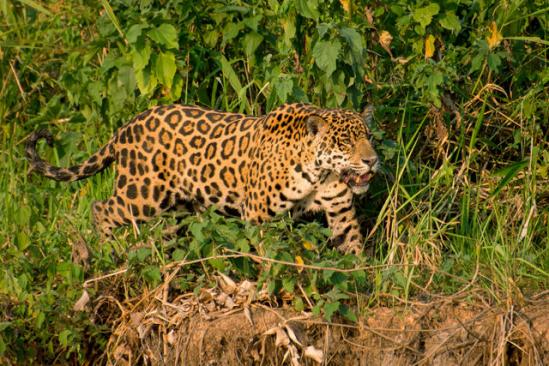Specimen information:
Information about the species:
Chordata ,Vertebrata ,Mammalia ,Carnivora ,Felidae ,Panthera ,Panthera oncaDescription:
A strict carnivore, the Jaguar is an American feline that feeds on large prey items such as deer, capibaras, tapirs and foxes, but also on caimans, rodents, fish, turtles and birds. It captures its prey either by biting their necks and asphyxiating them, or by perforating the rear part of their skulls with its canine teeth. Its skull has a characteristic feline shape, that is, rounded with a vertical face and short muzzle. The Jaguar's skull as a whole is robust. Its mandible is very powerful and its bite is the most powerful of all the world's felines. The skull has a sagittal crest and paraoccipital processes to which the masseter (the masticatory muscles) muscles are fixed. The orbits are placed on the front of the skull giving it the typical binocular vision found in other carnivores. It has a carnivore's typical secodont dentition, which enables the muscles of captured prey to be torn and quartered by its carnassial teeth at P3 (third upper premolar) and M1 (first lower molar). The Jaguar has 30 teeth with the following dental formula: I 3/3 C 1/1 P 3/2 M 1/1. It uses its long sharp canine teeth to hunt its prey.

© Cláudio Dias Timm
More data:
Related 3D images:
Information about 3D image:
Log in to comment
I want to register to comment
Bioexplora, the participatory space and consultation of the scientific heritage of Museum of Natural Sciences of Barcelona
Register or access to participate